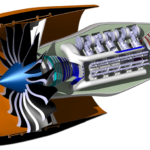Boeing’s Dawen Nozdryn-Plotnicki looks at how to realise business value from analytics in aviation.
We often hear operators lamenting they hear all the buzz about ‘big data analytics’, but they don’t see it translated to business value and are unsure how best to mine the ‘mountain of data’ from their operations.
Does this sound familiar?
The aviation industry has access to more information than ever thanks to connected airplanes and operations. If used thoughtfully and deliberately, data can be turned into actionable insight to help improve efficiency, performance, safety and economy. Big data, platforms, and tools are a matter of course to make sense of it all, but they don’t cut it alone. Expert engineering knowledge in aircraft systems in conjunction with data science and advanced analytics for a lean and mean analysis process, as well as implementation of analytics discovery into maintenance processes, are critical to realising business value from analytics in aviation.
Analytics in action
Let’s look at a recent example from a Boeing 787 operator. Using the operator’s full flight sensor data and maintenance records, amounting to over 200 billion – yes, billion – data points to analyse, our Boeing AnalytX team applied machine learning to diagnose corrosion in the hydraulic spoiler power control unit, which can cause AOG (aircraft on ground) events when both of the internal motor windings fail.
The algorithm detects when one of the two redundant copper wires has corroded to the point of open circuit failure. This in itself was an accomplishment as a fault message is not generated by the aircraft until both wires have failed, an event that happens rather rarely thanks to the high reliability of modern airplanes. While the event is very uncommon, and does not present a safety of flight issue, it is still immediately disruptive to operators as there are no visible early indicators until the fault message.
The paired engineering and data science team set out to detect when the unit would start to degrade in order to figure out the optimal time to manually inspect the spoiler power control unit before the degradation became critical. Without the ability to accurately predict which tail and spoiler position is degrading, an operator would have to inspect them all and repeat these inspections periodically – a very costly endeavour. Over only a few weeks, by systematically running thousands of mathematical experiments to find meaningful predictive signatures using machine learning and deep learning methods, patterns that were invisible to the naked eye of an engineer were now identified.
Predicting
Using side-by-side validation and frequent iterations between Boeing’s data scientists and design and system engineers, supported by Boeing’s global fleet knowledge, we were able to find and validate a data signature that predicts the specific tail and spoiler position to inspect with 95% accuracy.
This algorithm provides weeks of advanced notice prior to actuator failure, so the operator can effectively plan in the upcoming targeted inspections into their scheduled maintenance timeslots at main bases. This use of Boeing AnalytX allowed the operator to go from reactive to predictive maintenance with adequate time to plan the maintenance action and avoid disruption. Along with avoiding disruption, this represents a 68% cost reduction for the operator relative to blanket spoiler inspections across their fleet.
New horizons for engineers
This example illustrates what a promising time it is for engineers and maintainers, who are on a new horizon as it relates to predictive and prescriptive maintenance. Prescriptive maintenance has evolved quickly, becoming part of the equation as early as the design phase of an airplane, continuing through the test and build process. As we continue to adopt and refine the power of analytics in the aerospace industry, airplanes are entering service at a higher level of reliability and availability than previous models. With the power of prescriptive maintenance, airlines are empowered with actionable insight to support and guide their decisions.
Once the airplane is in operation, the information flow becomes even more significant. Even though we have been using big data and analytics for over half a century at Boeing, the pace of change has quickened over the last two decades. Boeing AnalytX amplifies our data-supported insights, both internal and for our customers, by utilising more powerful analytics methods like machine learning, artificial intelligence, deep learning and natural language processing, to name a few.
Through predictive and prescriptive analytics, we are able to reveal a new level of exposure and understanding we would have not thought possible a few years ago.
Tools need people
However, tools are just tools. They are not successful on their own. True success and transformation is realised when we see the power of analytics coupled with industry expertise.
At Boeing, we strive to enable the people of aviation with the right tools and knowledge to make sound decisions. Prescriptive maintenance give operators a richer, more dimensional view, eventually evolving to offering the decision-maker everything they need to know to make smarter decisions on how to optimise operations.
Coupling predictive and prescriptive maintenance with Boeing’s expertise and our customer partnerships results in the ability to address problems before they happen instead of reacting after a fault or failure, helping engineering and maintenance teams distribute parts, schedule personnel and plan maintenance events in a way that addresses problems in a timely manner while keeping up the operational performance.
It’s truly a new day in engineering and maintenance. I encourage you to share in the comments your thoughts on how analytics is and will be enhancing your operation.
Additionally, please join me to continue this conversation as I discuss “Big Data and the Future of Engineering” during the FINN Sessions at Farnborough Airshow on Tuesday, July 17 .

